Kristiinankaupunki 作者: 来源: 发布时间:2021-06-21
一、所属省或是州,具体位置,人口,面积
Kristinestad is a town and a municipality in Finland. It is located in the western part of Finland on the shore of the Bothnian Sea. The population of Kristinestad is 6,599 (31 January 2019) and the municipality covers an area of 682.53 km2 (263.53 sq mi) (excluding sea areas) of which 14.66 km2 (5.66 sq mi) is inland water (1 January 2018). The population density is 9.67/km2 (25.0/sq mi). The population is bilingual with a majority speaking Swedish (57%) and the minority Finnish (42%). The town was chartered in 1649 by Per Brahe the Younger at Koppö island and is named for Queen Christina of Sweden. Kristinestad is known for its old town with low wooden houses and narrow alleys. In April, 2011, Kristinestad became Finland's first Cittaslow community.
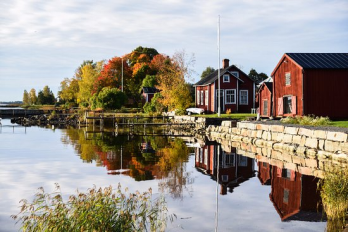
二、自然地理
1.地理条件
The town stretches along the Gulf of Bothnia, with no less than 370 km of very cut coast. The region is very flat, except for its southern part crossed by the Suomenselkä moraine (which reaches the sea at the village of Sideby, very close to the Satakunta border). The sea recedes significantly each century under the effect of isostasis. The town is largely agricultural, with greenhouse crops in number nevertheless lower than in Närpes. It is bordered by the municipalities of Närpes to the north, Karijoki and Isojoki to the east (Southern Ostrobothnia), and finally Merikarvia to the south (Satakunta).
The Susiluola cave, located under the town is a place of research and archaeological study. Kristiinankaupunki is located about a hundred kilometers from Vaasa, Seinäjoki and Pori. Its neighboring municipalities are Isojoki, Karijoki, Merikarvia, Närpiö and Teuva.
三、经济发展和规模
Kristinestad's markets have more than 200 years of history. Since 1783, the autumn harvest has been sold on the Mikaeli market. Previously, a winter market was held at the torch fair, but due to a small turnover of both visitors and sellers, it was replaced by a spring market. During the summer, the most crowd-pleasing summer market is held today, gathering more than 60,000 visitors. It has been held since 1994 and is always the first Saturday in September.
In Kristiinankaupunki, in addition to tourism, agriculture is an important, employing industry. The main crop to be cultivated is the potato; Kristiinankaupunki is Finland's largest ware potato producer, with approximately 2,700 hectares of arable land in 2009. Estrella Finland had a potato chip factory from 1988 to 2004. Sour cream-flavored potato chips were invented at the Kristiinankaupunki potato chip factory.
The companies that paid the most corporate tax in 2016 were Öströmin Perunatuote, Kone-Ketonen Oy and Krikoma Ab, which produces machines and their components for industry.
四、产业特点重点项目
Kilens Home Estate
Kilens Hembygdsgård is located in Sideby and is a museum that encompasses peasant, fishing and community culture and they convey knowledge about the life and way of life of previous generations.
Lebellska grocery store
In the Lebellska merchant's estate, the visitor can explore style historical interiors from the 18th-18th centuries and an important part of Kristinestad's history. Original details remain in the house with furniture, utensils and ornaments. The house's baroque hall from the 17th century is the only one of its kind in Finland, the ceiling paintings and wallpaper in the hall are original and the green tile stove is probably the oldest in Finland.
五、风景名胜,景点( attractions)
1. Wolf Cave
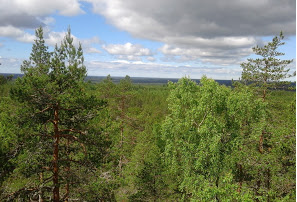
Wolf Cave is a crack in the Pyhävuori mountain (Swedish: Bötombergen) in Kristinestad, near the Karijoki municipality in Finland. The upper part of the crack has been packed with soil, forming a cave. In 1996, some objects were found in the cave that brought about speculations that it could have been inhabited in the Paleolithic, between 120,000 and 130,000 years ago. These objects, if authentic, would be the only known Neanderthal artifacts in the Nordic countries. In 1996, plans were made to empty the cave of soil and turn it into a tourist attraction, but during the process, stone objects that might have been created by humans were found and the work to empty the cave was halted. In 1997, an excavation of the cave was begun as a collaboration between the National Board of Antiquities, the Geological Survey of Finland, the Department of Geology of the University of Helsinki, and the Finnish Museum of Natural History. This excavation lasted until 2000, and was focused on determining the age of the materials, finding out if similar items could be found elsewhere in Europe, and reconstructing the prehistoric surroundings. The results were presented in a 2002 report.
2. Pyhävuori
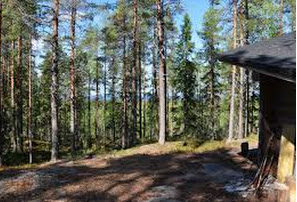
When moving slightly from the fields of Ostrobothnia towards the hinterland, a region called locally called the Lake District becomes responsible. Compared to Lake Finland, there are certainly few lakes, especially when many of them have been drained over time, but at the provincial level there are many lakes.
The largest and in many ways the most beautiful is Lake Lappajärvi, a crater lake about 15 kilometers in diameter, created by a celestial catastrophe about 76 million years ago.
In craters, the central pressure is always surrounded by some kind of curb. In Lappajärvi, millions of years have had time to level the curb so that it is hardly noticeable in places. On the southeastern shore of the lake, however, the crater ridge reaches more than 100 meters above the lake surface as a ridge formed by Lakeaharju and Pyhävuori. Your wooded and rocky ridge only rises to heights only about a mile from the shore of the lake, so none of your steep cliffs are involved.
Still, when viewed from above, the landscapes are spacious even in Ostrobothnia. Especially when seen from the rocky top of Pyhävuori, the landscape has exceptional roughness. Pyhävuori is not to be called Koli in Ostrobothnia.
3. Carlsro
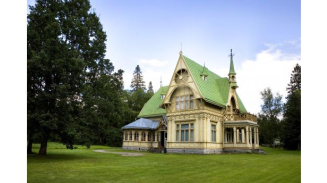
Carlsro is a one-of-a-kind museum, where a mansion preserved from the 19th century blends in with a unique and eclectic collection of items. One can sense in the mansion, how the gentry lived in the summertime at the turn of the 20th century, how the house was used as a hotel in the 20th century and how a collector’s vision for preserving local history can be formed.
The Carlsro mansion has experienced a lot before it became a museum. It was built in 1896 as the summer villa of commercial counsellor and ship-owner Carl Alfred Carlström. The high society of the city had stately summer villas constructed at the end of the 19th century, and the gentry lived a life of pleasure on the banks of the Storträsk. The villas were named after the expectations of the gentry and their experiences on the villas, for example Ilolinna (the Castle of Joy) and Surutoin (Carefree). In the beginning of the 20th century the luck ran out and Carlström filed for bankruptcy in 1910. The villa and its movables were auctioned the next year. Carlsro was turned into a summer hotel and it had several owners since 1922. The business was, however, not profitable and the hotel closed its doors in 1945.
4. Kristinestad Ulrika Eleonora Church
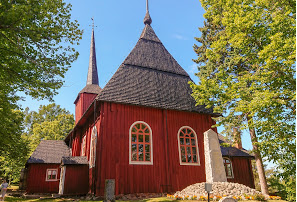
Ulrika Eleonora's Church is a wooden church built in 1700 on the hill north of the Town Hall in Kristiinankaupunki. It is one of the most significant attractions and a popular wedding church in Kristiinankaupunki, but is only in summer use and is therefore not a permanent parish church. It represents the oldest building stock in the city. The church is one of the most significant wooden churches in Finland in the 18th century, and it has remained exceptionally authentic.
The church is named after the widow Ulrika Eleonora, the mother of King Charles XII. The church is a so-called desert church, which means that it has been left out of year-round parish use when a new church has been built nearby, which has become the actual church of the parish. However, desert churches are maintained and provide a picture of a church space that was once without amenities. The church has hosted concerts at the Korsholm Music Festival.
六、历史文化
1.历史
Kristinestad was founded in 1649 by the Swedish governor general in Finland, Count Per Brahe the Younger, on the island of Koppö, which had previously belonged to the parish of Lappfjärd. On March 1, 1651, Brahe ordered that the city's name be changed from Koppö to Kristinestad (Christinae Stadh). Queen Christina of Sweden is considered to be the namesake, but it is believed that Brahe especially wanted to memorialize his wife, Countess Kristina Katarina Stenbock, who died in 1650.
Kristinestad initially developed slowly, but after the port received stacking rights in 1792, it quickly grew into a wealthy city, as evidenced by representative buildings such as the town hall built in 1856 and the approximately 3,000 wooden residential and warehouse buildings in the city center.
2. 文化
The City Council's shipowner Carl Alfred Carlström built his summer villa at Storträsket in 1896. The villa was called Carlsro. Carlsro is a preserved mansion villa from the 19th century with a significant collection of utensils. You also get a sense of how mansion people enjoyed the summer in the early 1900s
In 1910 Carlström lost the villa in a tragic bankruptcy and the villa with equipment went on auction the following year. Carlsro served as a summer hotel with various business owners in 1922-1945. But the business was unprofitable and the villa was again unused in 1945.
In 1960, the Finnish Tourist Association decided to sell the villa at auction to the most bidder. The villa was called by Kristineestadsbon Åke Weckström, who came up with an idea of the future of the old villa. It was to be a museum. Carlsro's museum operations began in the early 1960s. Åke Weckström was an avid collector throughout his life and Carlsro Museum was built by his collections. Weckström managed the operation and the property together with his wife Anni, and the museum's collections gradually expanded. When Åke Weckström died in 1989, the museum's operation and maintenance went to a foundation founded in the 1970s. In 2002, Kristinestad's museum took over the museum.
The Maritime Museum in Kristinestad contains objects, photographs and stories related to shipping, shipbuilding and shipping operations in the city. The incredible sailings that were made earlier come to life in the versatile exhibition. The Naval Museum in Kristinestad has two operating points: one in the city library's attic next to the Market Square and one in Badhusparken's maritime magazine.
Ulrika Eleonora Church
Ulrika Eleonora Church, Kristinestad is one of the oldest buildings in the city and is also one of the best preserved 18th century churches in Finland. The widow queen Ulrika Eleonora has named the church.
七、其他信息
In addition to Rauma and Porvoo, Kristinestad is one of the largest and best preserved wooden house towns in Finland.
The single-nave Ulrike Eleonore Church was completed in 1700 and, with its leaning church tower, is one of the symbols of the city. However, the services of the two Protestant parishes - the Finnish and the Swedish-speaking ones - usually take place in the new city church, built in 1897, a 1,000-person single-nave brick building.
By far the largest church in the city is located in Lappfjärd . This cruciform church, built in 1852 with a free-standing bell tower, can accommodate 3,000 believers. The length of the benches is said to be 1.6 km in total.
八、联系方式
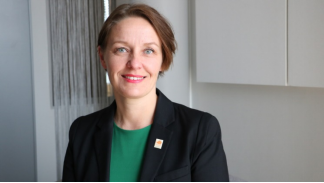
Mayor of Kristinestad (Kristiinankaupunki): Mila Segervall
Website: https://www.kristinestad.fi/
Email: kristinestad@krs.fi
Address: PB 13, 64101 Kristinestad
Phone number: +358 6 22 16 200/ +358 6 22 18 411
